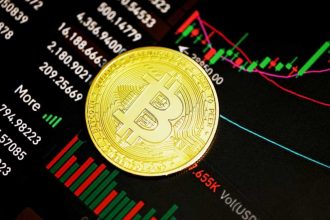Being a college athlete is a lifetime dream for many sporty high schoolers, one of the main reasons being the significant amount of money they can earn while learning. Currently, the highest-paid college athlete is quarterback Shedeur Sanders, who plays for the University of Colorado and is said to have a value of around $4.7 million. He is closely followed by Bronny James of USC (with an estimated net worth of around $4.5 million), then by Livvy Dunne (worth around $3.7 million). If you are intrigued by the possibility of making an impressive living doing what you love (before you’ve even graduated) then read on.
2021: A Defining Year for College Athletes
Things weren’t always easy for college students aiming to create wealth. College athletes aren’t officially “paid” top lay for college teams, nor are they compensated for the time they invest in training. Rather, they are considered “amateurs,” who nevertheless build up a sizeable bank account via their NIL (name, image, and likeness). In 2021, the NCAA implemented a policy that allowed student-athletes to enter partnerships with brands, sign endorsement deals, sell merchandise and autographs, and similar. It makes sense considering the fact that there is a high demand for these products.
A Groundbreaking Study
Prior to the groundbreaking change in regulations mentioned above, college students only earned around $23,204 in scholarship money. The study, undertaken by The National College Players Association and Drexel University, showed that the fair market value for an average FBS football player stood at around $137,357 per year. Meanwhile, the fair market value for the average men’s basketball player was around $289,031 per year. These figures were even lower than the potential worth of players from top schools and teams. Regulations stopping athletes from earning their fair market value could be seen as unfair, which is why the 2021 change was more than necessary at the time it came into effect.
Giving Players Greater Freedom
The study critiqued enforced “amateurism” for many reasons, including the fact that it stops athletes from negotiating on their own behalf. It additionally limits their ability to transfer, significantly reduces the amount of money they earn, and fails to compensate them for the use of their NIL. It also fails to give them due health benefits, stops them from connecting with sponsors, and limits their access to due process and fair enforcement reviews.
Making Additional Income
Players today are making significant amounts of money from other sources, including donor collectives. Wealthy collectives are providing student-athletes with substantial payments in many cases, in return for aid with philanthropic, media promotion, or minor tasks. The New York Times reports that at Ohio State University, some players not only receive a paycheck but also a free car lease thanks to donor collectives. One player at Michigan State University reportedly earns around $750,000 a year from one collective. Some have criticized this practice, staying that the collectives have effectively hijacked the NIL system to circumvent the NCAA’s ban on paying players to play, by finding roundabout ways to fatten players’ pockets. Another important means of making a bigger income is through merchandise sales. Startups and seasoned companies alike are helping athletes create and distribute merchandise, so they can start building and profiting from their personal brand while they are still pursuing their degrees. A third source of earnings is fan engagement events. Student-athletes are free to organize branded training sessions and receive compensation for appearing at autograph signings and fan interaction events.
The year 2021 was a groundbreaking year for student-athletes. Many would say that the decision to allow them to profit from their NILs was overdue. This is because prior to the decision, their worth on the free market was far higher than what they were able to generate during their stay in college. Today, college athletes are not only building up sizeable net worths from brand sponsorship deals but also from the generosity of collectives. They are additionally dabbling in entrepreneurship from an early age, partnering up with startups and larger companies to create and sell merchandise that are hot commodities among their most fervent fans.














